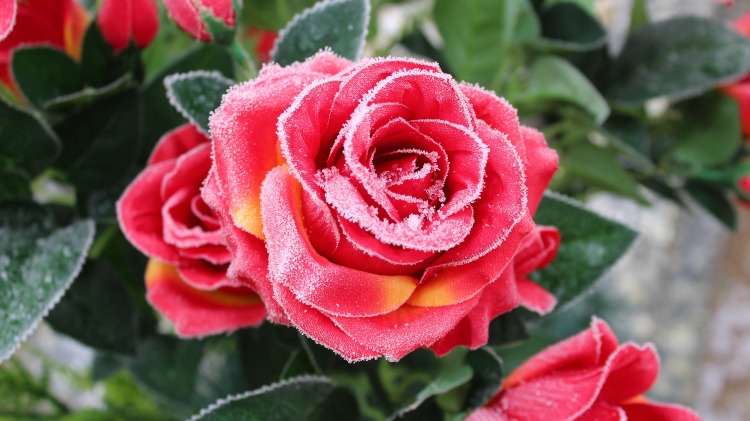
Winter can be a pretty gloomy time of year – it’s cold, it’s dark, and all you want is to be cuddled up somewhere warm with a hot drink and some fluffy socks on.
While we have the option to tuck away somewhere and take shelter from the cold, our garden plants don’t, so it falls to us to do everything we can to protect them from the cold.
Tips for protecting plants from cold:
When it comes to preventing winter damage, there are numbers of tips, tools, and techniques you can use to help protect your garden.
1) Cover up
Applying a physical covering to your garden plants is an effective way to prevent cold-related damage. There are a number of products that are specifically designed for the task of protecting plant life from cold weather, such as plant winter protection fleeces. If you don’t have garden fleece to hand, you can improvise with a number of alternatives, such as an old bedsheet or an upturned bucket.
2) Water your plants
Watering in your plants in the winter can be a challenge; many people think that garden plants don’t need to be watered in the winter because it’s cold, but that’s definitely not the case! It’s important to keep your lawn hydrated all year round.
When watering your lawn in the winter, it’s best to do so in the middle of the day when temperatures are a little warmer. This gives plants the opportunity to absorb the water through their roots before the cold temperatures freeze the soil. It’s also worth knowing that moist soil can hold up to 4 times more heat than dry soil!
3) Shelter
If you have any potted plants that can be moved, we’d recommend moving then to a more sheltered position. A garden shed is a good example of a sheltered environment that’s suitable for a garden plant in the winter – however, we’d advise against bringing your garden plants inside during the winter. The sudden temperature change can kill them.
4) Shake it off
While snow can create an insulating layer that helps protect plants from frost and sub-zero temperatures, it can also be very heavy, weighing them down and causing them to become disfigured and damaged. After snowfall, give your plants a little shake to offer some relief from the extra weight.
5) Don’t walk on the grass
During the winter time, grass is a lot more fragile than it is at other times of the year. Walking across your lawn whether snowy or frosty can result in the grass becoming crushed and damaged. A damaged lawn can be susceptible to all manner of diseases, such as fusarium (also known as snow mould).
* * *
Caring for your lawn during the winter months can be a challenge, no mistake about it! If you’re struggling to maintain your lawn in the winter months and would like some professional assistance, click the link below to read more about our winter lawn treatments and how they can benefit you.
Winter Lawn Treatment Services
If you have any questions about winter lawn care and would like to speak to a professional, reach out and contact Lawn & Weed Expert today. A member of our team will be more than happy to answer any questions you may have, and help you arrange your free no-obligation lawn survey!
Contact Us
Read More: How to Remove Snow from Your Lawn